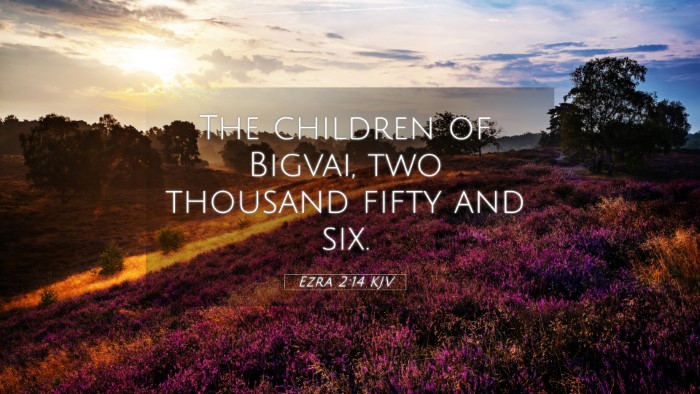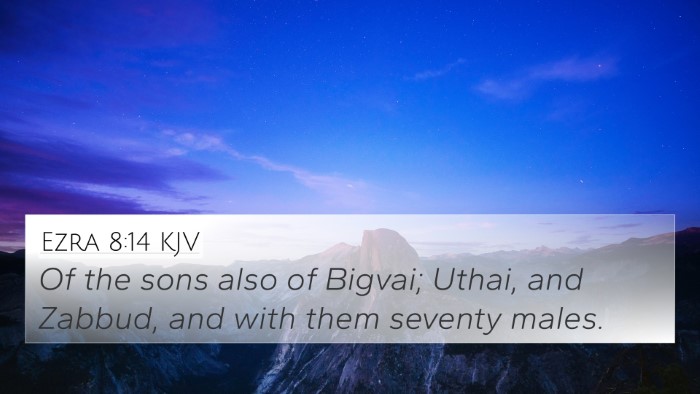Understanding Ezra 2:14
Ezra 2:14 reads, "The children of Zaccai, seven hundred and threescore." This verse is part of the larger context in which the Israelites returning from Babylonian exile are enumerated.
Summary of Epic Context
The book of Ezra focuses on the return of exiled Jews to Jerusalem and the rebuilding of the temple. Ezra serves as a priest and scribe tasked with restoring both the people’s spiritual and communal identity.
Insights from Commentaries
Various public domain commentaries offer insights into this verse and its significance:
- Matthew Henry: He highlights the importance of the census taken of those who returned, emphasizing that each individual mattered to God. Each group mentioned represents a unique aspect of the community's restoration.
- Albert Barnes: Barnes focuses on the descendants of Zaccai. He notes that the number itself—760—is significant in that it illustrates the bounty of those who returned and the remnant that still remained faithful to God during the exile.
- Adam Clarke: Clarke provides a historical context by discussing the lineage of Zaccai. He explains that genealogies were crucial in establishing identity, showing how the Lord preserved a remnant throughout their trials.
Thematic Connections
Ezra 2:14, while seemingly a simple enumeration, relates deeply to themes of restoration, identity, and God's faithfulness. It serves as a reminder of the importance of each returnee's contribution to the nation.
Cross-References to Ezra 2:14
Several Bible verses are interrelated with Ezra 2:14, showcasing the broader narrative and themes within Scripture:
- Nehemiah 7:14: Another account of the returnees offers a similar enumeration, highlighting the continuity of the restoration process.
- 1 Chronicles 5:29: This verse connects genealogies, which enrich the understanding of the Israelites' origins.
- Joshua 6:23: This passage speaks to loyalty amidst judgment, linking to the faithfulness of those in exile.
- Isaiah 44:28: Contextually aligns God's sovereignty with the return of the exiles.
- Romans 11:5: Paul refers to a remnant in his time, drawing a parallel to God's continued faithfulness through generations.
- Acts 15:17: References the restoration of David’s fallen tent, identifying continuity in God’s plan.
- Hebrews 11:6: Connects to the theme of faithfulness, as those who returned exhibited great faith in returning to their homeland.
- Revelation 21:12: Discusses the foundational stones of New Jerusalem, linking to the covenants and restoration promised in Ezra's time.
- Galatians 3:29: Highlights the inclusion of all believers in the family of God, akin to how the Israelites maintained their identity.
- Matthew 4:16: Speaks of the light that comes to those in darkness, akin to the hope brought to the returning exiles.
Applications of Cross-Referencing
Engaging in cross-referencing Biblical texts can illuminate the connections between various scriptures, enriching personal study and sermon preparation. Consider the following methods to enhance understanding:
- Using a Bible Concordance: Helps to track themes and terms across different verses.
- Bible Cross-Reference Guides: Provides structured ways to link verses together, establishing thematic connections.
- Inter-Biblical Dialogue: Reviewing how biblical authors engage with earlier texts offers rich insights into their meanings.
Conclusion
In summary, Ezra 2:14 serves a significant role in the narrative of restoration and faithfulness. Its connections across various biblical texts through cross-referencing offers enriched understanding and highlights the continuity of God's promises throughout history.




